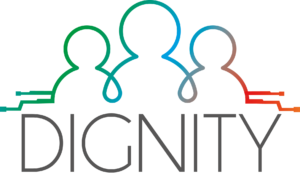The city
The Italian pilot will be carried out in the metropolitan area of Ancona in the Marche region. Its strategic position and its three major interchange hubs (an airport, port and train station) make Ancona an ideal starting point for tourists and residents to travel throughout Europe.
The challenge
Over the years, the lack of a single multimodal information system and difficulties in displaying transport information have discouraged users from starting their trips from Ancona or using public transport to reach the interchange hubs. Since 2016, the main public transport operator in Ancona, Conerobus SpA, has offered end users a digital mobility application, ATMA, that aggregates information from different transport operators in local areas for a multimodal trip experience. Via the app, users can find multimodal trips, browse timetables, and purchase tickets, including seasonal tickets.
The existing system, including the digital application, facilitates traveling and provides transport for 18 000 000 passengers/year within Ancona with 244 buses. Yet vulnerable-to-exclusion users are not always reached. Currently, the municipality of Ancona and the transport operator are working together with the digital service provider to overcome this issue by assessing needs and collecting comments through the direct involvement of Ancona’s association for the visually impaired.
The vision
Designing and developing of new services and improvements to the app
The app will be updated with the following new services for the area involved:
- Multi modal trip planning including 10 different public transport operators, the national railway operator, and the possibility of including alternative modes of transport, such as car-sharing;
- Real-time information about next stops and delays. For example, the app can let blind people know what the next stop is when they are on the bus;
- Introduction of beacons for real-time information about the next bus approaching and the next stop;
- Integrated ticketing for public transportation and a single payment for the services offered (train, bus);
- Voice commands to facilitate the use of the app.
Analysing new features, measures, and actions
A better offer will be prepared as part of the business plan, particularly for low-income users and migrants. Best practices and a feasibility assessment will be drafted, along with new measures to increase inclusiveness, such as offering the app in seven different languages, reflecting Ancona’s changing demographics.
Pilot partners want both to improve the existing digital application with new features/services, and to reach as many users as possible for a total inclusion of vulnerable-to-exclusion users. This pilot will raise awareness of the current local digital divide, as it highlights obstacles, critical issues and gaps at the organizational, political and technical level.
The Ancona pilot focuses on four different groups of users: visually impaired or blind people; disabled people or persons with reduced mobility; low income users; and migrants. That said, the app will be also available for regular users, such as commuters and students.
Expected impacts
- A more inclusive transport system with improved service;
- Improved knowledge of user needs for policy makers and digital application developers;
- Better insights for policy makers for local guidelines, accessibility plans and SUMPs;
- A better environment for passengers (citizens, tourists, commuters, etc.);
- Improved city access for vulnerable-to-exclusion passengers;
- A reduction in the local digital divide.

Local actors
- Public Authority: Municipality of Ancona;
- Public Transport Operator: Conerobus S.P.A.;
- Digital service provider: MyCicero srl.
- User groups and the department of social policy representing vulnerable-to-exclusion users;
- Local public transport operators;
- UICI – Italian Union of the Blind and Visually Impaired.


